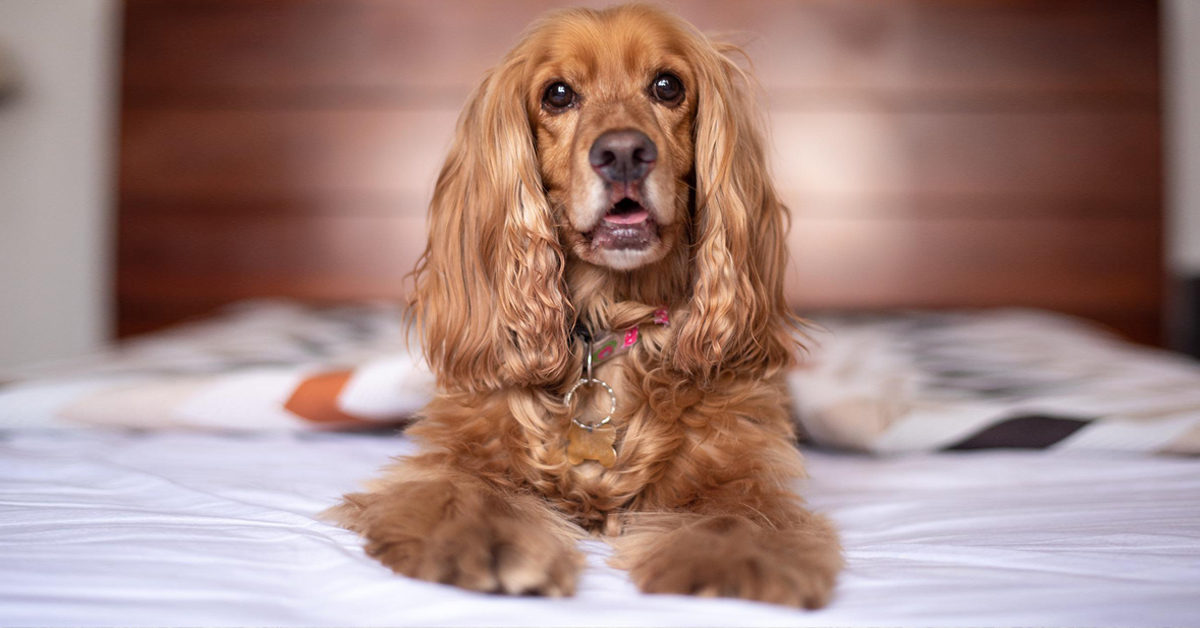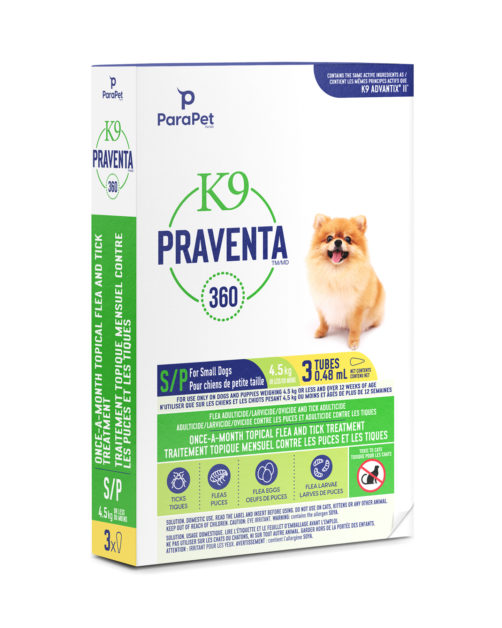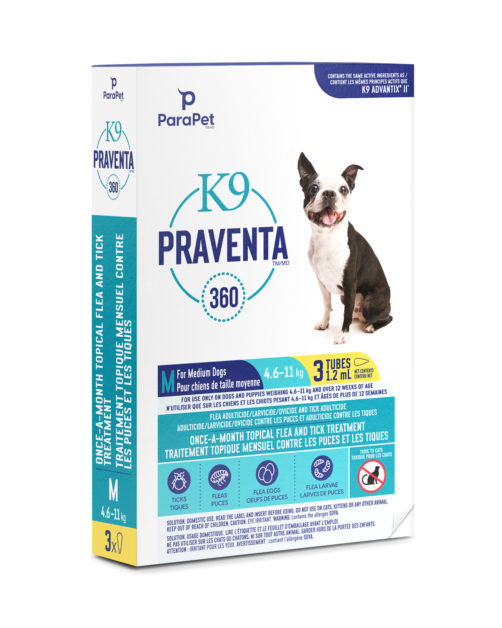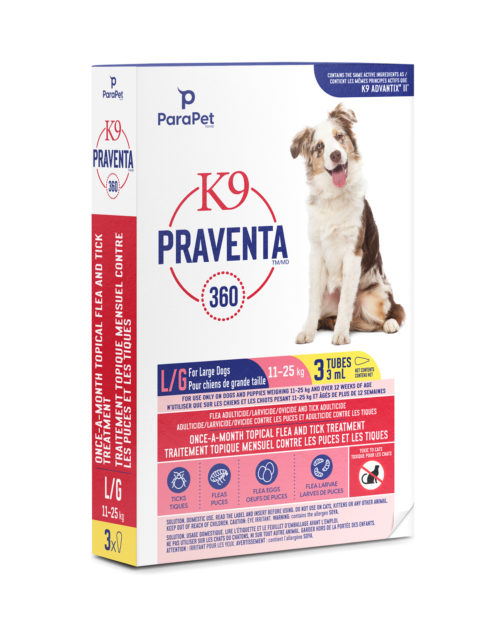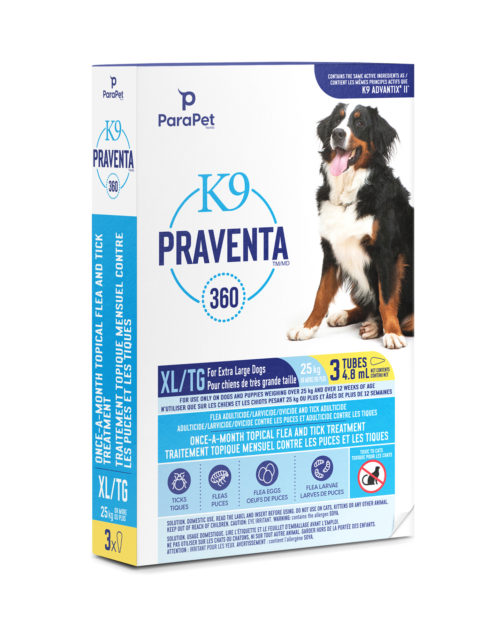If you’ve discovered fleas on your dog, then chances are your home is also infested with them. So, you’ll need to act fast to get rid of them because fleas spread and reproduce quickly.
But how to eliminate them? The best approach is a multi-step one that simultaneously targets your pet and your home, including your yard.
To learn about the flea life cycle and how to spot the tell-tale signs your pet has fleas, click here.
STEP 1: START BY TREATING YOUR PET
First, use a fine-toothed flea comb to remove fleas from your dog. Do it outside and focus on the neck area and at the base of its tail. Keep a cup of hot soapy water beside you to dip the comb in to drown the fleas.
Next, give your dog a bath to remove any residual fleas or flea eggs you might have missed. Any type of soap or shampoo will kill fleas, so it doesn’t necessarily have to be a flea bath. Just be sure to check that the product you use is safe for your pet, and that the water is not too hot.
One of the best ways to protect your dog from fleas is to apply a monthly topical treatment, such as K9 Praventa 360, that kills adult fleas on contact. Not only does it repel and kill adult fleas, but it also disrupts the flea life cycle by preventing flea eggs and larvae from developing.
Lastly, even if you think you’ve removed all the fleas, continue to comb your dog every few days to ensure fleas aren’t recurring.
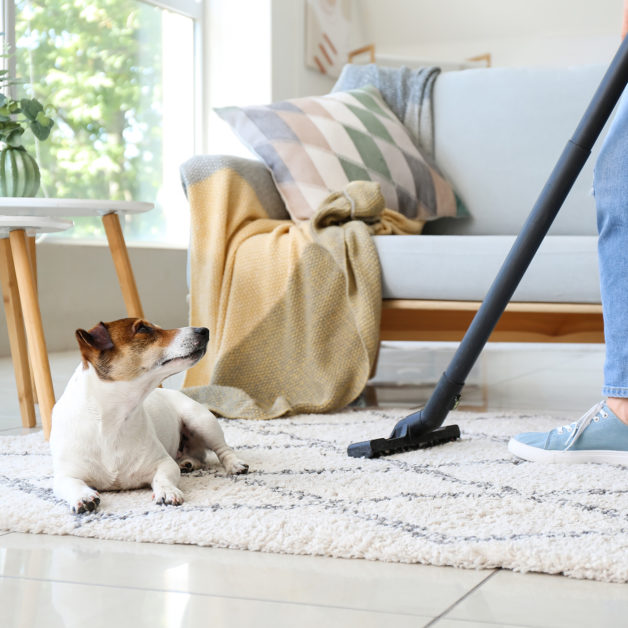
STEP 2: BREAK OUT THE VACUUM
Once you’ve confirmed the presence of fleas, the best way to get rid of them is to vacuum immediately and often.
Vacuuming helps remove the adult fleas living in your carpet and soft furnishings and helps to get rid of flea dirt (pre-digested organic debris passed through adult fleas) thus eliminating the larvae’s food source, as well as stimulating flea pupae into leave their cocoon prematurely.
Fleas not only find their way onto furniture and carpets, but they can also live within the cracks of hardwood floors. Therefore, surfaces such as carpets, floors, upholstery, curtains, and any place your dog likes to sleep or hang out should be vacuumed daily. Use corner attachments for baseboards, heat vents, floor cracks, carpet edges and room corners.
If regular vacuuming is not enough, try sprinkling salt or baking soda on the carpet or furniture first, leaving it for 24 to 48 hours and then vacuuming it up. Why? Because salt and baking soda are natural dehydration agents, quickly killing fleas and drying them up. For a serious infestation, you might consider renting a steam cleaner.
Once you’re done, dispose of the vacuum bag by sealing it in a garbage bag and placing it in an outdoor trash can to prevent fleas from escaping and eggs from hatching inside the machine.
If your dog rides in the car with you, remember to vacuum any fabric surfaces inside your car and make sure your pet sits on a blanket that can be changed and washed regularly.
STEP 3: WASH BEDDING IN HOT WATER
Wash ALL bedding – your pet’s and yours – as well as pillows, area rugs, blankets, and clothes in HOT, soapy water. Fleas can’t survive temperatures of 35ºC or higher, no matter the life stage and adding laundry detergent to the hot water makes the treatment even more effective. Follow by throwing everything in the dryer at the hottest setting.
As a precaution, continue rewashing your dog’s bedding in hot water for at least once a week for several weeks, until all signs of flea infestation are gone. Make sure any detergents used in the process are pet friendly. If your dog does not use a pet bed, then any areas of the home in which it prefers to sleep should be thoroughly scoured.
STEP 4: DON’T FORGET YOUR YARD
It’s not enough to just tackle flea infestation inside your home, you need to treat the outside of your home as well.
Fleas can survive outdoors for up to two weeks without a host. Oftentimes, your dog can pick up fleas right in its own back yard — usually from wild animals, such as squirrels, raccoons, or skunks, dropping flea eggs in the yard as they pass through it.
Here’s what you can do to help reduce your pet’s chances of contracting fleas and bringing them indoors:
- Spray your yard with an outdoor flea and tick spray to kill any flea populations that may be hiding in the yard and around the foundation.
- Mow your lawn regularly and clear away yard litter including clippings, branches, and leaves. Fleas thrive in dark humid and shady spots. Make sure to bag the contents rather than add them to your compost pile.
- Remove debris such as dead leaves and twigs from flower beds and under bushes. Expose as much of the shady areas to sunlight as you can. Fleas don’t like the sun or heat.
- Avoid overwatering grass, flowers, or shrubs – as this can create the exact humid conditions that fleas thrive in.
- Treat kennels, dog runs, dog houses or any area where your pet spends time outdoors.
- Remember to treat crawl spaces (under the deck) or other areas where wild animals with fleas might go.
- Repel fleas by planting fennel, lavender, mint, pennyroyal, or other plants that fleas don’t like. These plants are generally safe for your pet to be around but keep an eye out, so they don’t eat or nibble them.
AN OUNCE OF PREVENTION PROVIDES PROTECTION
The length of time required to get rid of a flea infestation depends on your environment and how long they’ve been there.
While prompt cleaning may get rid of most fleas within a day or so, it might take weeks to eliminate them completely due to their varying life stages. All the more reason to practice preventative measures regularly.
Examining your pet on a regular basis, coupled with the use of a monthly flea and tick preventative such as K9 Praventa 360, is the first line of defense against a flea infestation.
But if, despite your best efforts, you do find yourself battling against a flea invasion – remember to treat your pet, home, and yard at the same time. This combination approach works best to eradicate fleas and prevent future infestations.
